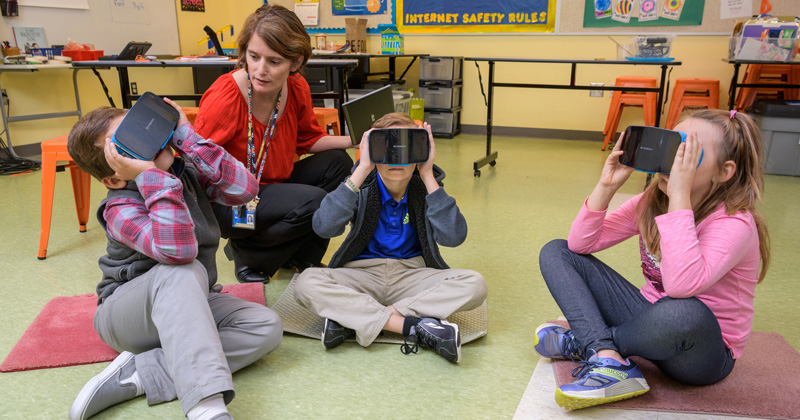Learning Through Creative Curriculum

Huddled over graph paper, carefully sketching the dimensions of toy blocks, sixth-graders in The College School at the University of Delaware eagerly learn how to create models to code into their 3D printer.
A nearby display case showcases masterpieces created by earlier classes: An orange pyramid with a portion cut away, revealing hidden tunnels. A yellow castle, complete with turrets and battlements. And, perhaps most impressive of all, a teal-blue diagram of an animal cell, dissected to show the features within.
Integrating a 3D printer into the curriculum isn’t just fun and games.
The College School specializes in educating students with language-based differences, social/emotional issues and auditory processing disorders.
“So many of our kids have language-based learning challenges, and school is highly language-based, so it’s really difficult for some of them to show their learning in a traditional pen-and-paper report,” said Laurie Drumm, master teacher at The College School. “3D printing gives students the opportunity to demonstrate their learning in non-traditional ways.”
Take the example of the cell diagram. In a typical classroom, students may be expected to read about cells in a textbook and then “show their work” in a quiz, test or report.
“But for kids with language challenges,” said Drumm, “that doesn’t really show all they know. If they can sit down and design something and print it out, it’s a non-language-based way for them to demonstrate their learning.”
Read more about The College School on UDaily.



